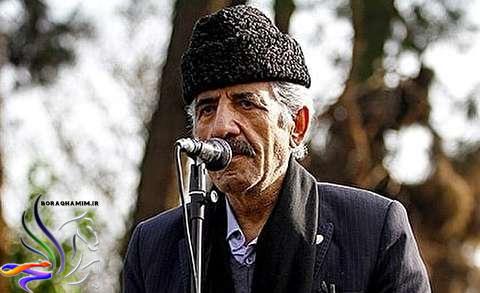In Iran, the tradition of praise and mourning for Imam Hussein (peace be upon him) has become one of the main parts of religious rituals. There are different forms of praising and remembering the sufferings of Imam Hussain (AS) in this country:
According to the report of Buraq Hamim art news site , in Iran, the tradition of praise and mourning for Imam Hussein (peace be upon him) has become one of the main parts of religious rituals. There are different forms of praising and remembering the sufferings of Imam Hussain (AS) in this country:
1. Traditional eulogies: Traditional eulogists mention the sufferings of Imam Hussain (AS) and other Ahl al-Bayt by using special tones and techniques. This style of praise has a long history in Iran.
2. New madahi: In recent decades, younger madahi have emerged who use newer musical styles to sing madah and lament. This style of praise has been welcomed by young people.
3. Imitation: In this tradition, the mourners depict the scenes and events of Karbala in a theatrical way and with special clothes to show the sufferings of Imam Hussain (AS).
4. Chaining and breast-beating: In these rituals, mourners remember the sufferings of Imam Hussain (a.s.) and Ahlul Bayt by beating chains and chest-beating, and show their grief over the incident.
5. Ta’zieh-khani: Ta’zih-khani as a traditional show depicts the story of the martyrdom of Imam Hussain (a.s.) and his companions in a dramatic way.
This diversity in the forms of praise and mourning shows the importance and depth of this tradition among the people of Iran.
In traditional Iranian praise, there are certain features that distinguish it from other forms of praise:

1. Special tone and voice: Traditional chanters use a special tone and voice that is rooted in traditional Iranian music. This vocal style is epic and poignant.
2. Use of ancient literature: Traditional eulogists use ancient Persian literature and classical poems in their eulogies. These poems are often associated with mystical and epic themes.
3. Ritual and traditional: traditional praise is rooted in religious rituals and ancient traditions. These eulogies are part of the rituals of mourning and honoring the Ahl al-Bayt (AS).
4. Use of traditional instrument: Traditional medahs usually perform medah along with traditional Iranian instruments such as reeds, tambourine, and tambur, which leads to a special tone and song.
5. Special vocal techniques: Traditional reciters use special vocal techniques such as voice vibration, extended reading, and writing, which help to express the sufferings of Imam Hussain (AS) more effectively.
All in all, these characteristics have preserved the traditional and ritualistic nature of madah among the people of Iran.
Traditional praise has experienced changes and transformations over time:
1. Adapting to today’s culture: traditional madahs have tried to adapt madah to modern culture and needs while maintaining traditional principles and characteristics. This is reflected in the use of today’s language and texts.
2. Use of new tools: Although traditional instruments are still used, today’s traditional worshipers also use new tools such as microphones, amplifiers, and audio technologies.
3. Changing playing style: Some traditional madahs have gradually moved towards newer and more modern playing styles, although they still adhere to traditional principles.
4. Combining with newer styles: In recent decades, we have seen the emergence of madahs who combine traditional madahs with contemporary musical styles and present them in a new way.
5. Presence in the virtual space: Today, traditional praisers also use the virtual space to publish and share their praises, which has helped to transfer and dynamize this ancient tradition.
Therefore, traditional praise, although it has preserved its foundation and basic principles, but with the passage of time and with cultural and social changes, it has also undergone changes and innovations.
In order to preserve and transfer traditional praise to future generations, there are some important suggestions:
1. Education and training of young madahs:
– Establishing schools and educational centers to train young madahs and transfer traditional knowledge and skills to them
– Holding workshops and educational programs by experienced madahs for the new generation
2. Paying attention to education in families and mosques:
– Encouraging families to familiarize their children with traditional chanting from childhood
– Nurturing and strengthening religious centers and circles in mosques to introduce and teach traditional chanting
3. Support of cultural and artistic institutions:
– Support of the government and cultural institutions for the production and publication of traditional madahi works
– Creation of festivals and special events to introduce, perform and promote traditional madahi
4. Using media capacities:
– Broadcasting and publishing traditional madah programs in mass media such as radio and television
– Using virtual space to record, archive and introduce the heritage of traditional madah
5. Paying attention to recording and documentation:
– Recording and documenting oral narratives and traditional praise traditions
– Preparing and publishing books, albums and educational content to document this valuable heritage.
By adopting these strategies and everyone’s efforts, effective steps can be taken in preserving and transmitting traditional praise and keeping alive the event of Karbala and the uprising of Imam Hussain (AS) to the future generations.







More Stories
“Sisad” concert-show ticket pre-sale begin
Iranian Cheese Festival will be held in Tehran
From “Sari Glin” to Azerbaijani folklores